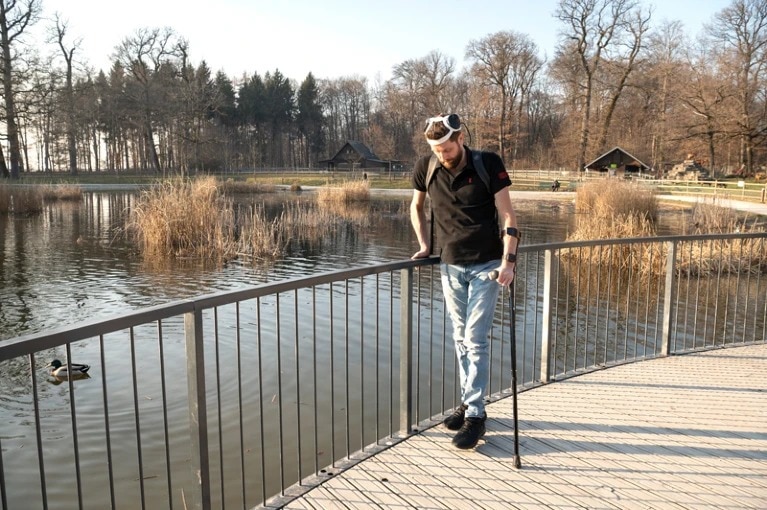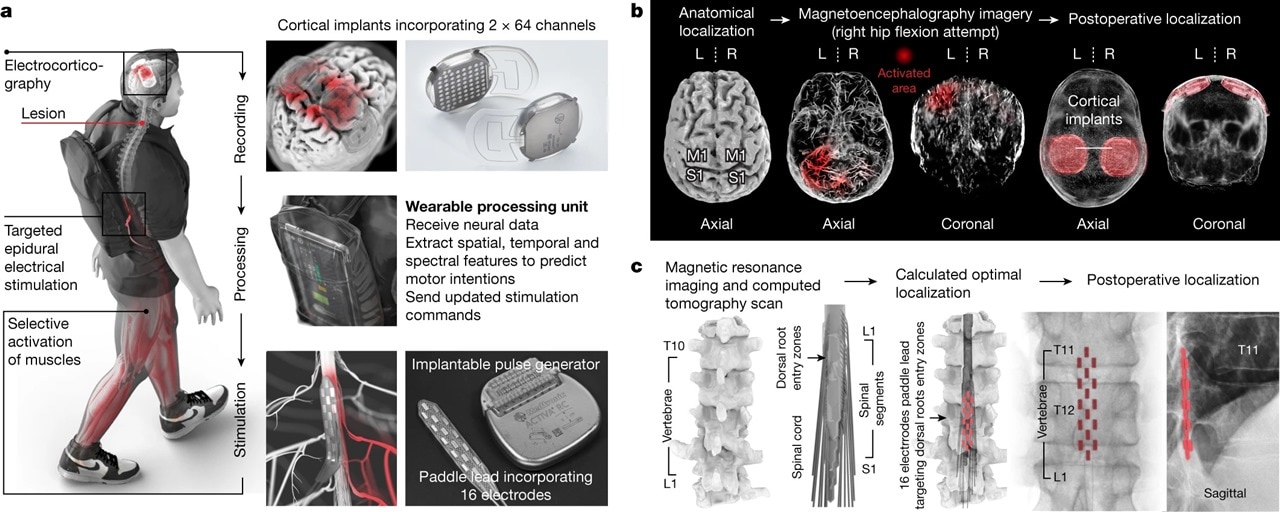
Thanks to AI and two implants, Gert-Jan Oskam has walked again after being paralyzed for the past 12 years from a cycling accident. (Image Credit: CHUV/Gilles Weber)
Gert-Jan Oskam, a 40-year-old man who got in a cycling accident that injured his spine and left his legs completely paralyzed, has started walking again thanks to a brain-spine interface. Researchers from the Swiss Federal Institute of Technology trialed this device in 2018, showing that applying electrical pulses to the lower spine allows those with spinal injuries to walk.
Now that the team has improved this system, patients like Oskam can benefit more from it. It works with two disc-shaped implants placed within the skull. Oskam needs to think about walking, and the implants pick up the cortex's electrical activity. A computer using AI in his backpack then transmits and decodes that signal before sending it to the spinal pulse generator (2nd implant in the lower back's spinal cord). This essentially bridges the badly damaged nerves in his neck. Afterward, an electrical signal stimulants his leg muscles in a certain order, allowing him to walk.
An earlier version of the device worked more like a pre-programmed stimulation. But now, it allows Oskam to control the simulation's parameters, enabling him to walk, climb staircases, and stop through his thoughts. "The stimulation before was controlling me and now I am controlling stimulation by my thought," says Oskam. "When I decide to make a step, the simulation will kick in, as soon as I think about it."

" a, Two cortical implants composed of 64 electrodes are positioned epidurally over the sensorimotor cortex to collect ECoG signals. A processing unit predicts motor intentions and translates these predictions into the modulation of epidural electrical stimulation programs targeting the dorsal root entry zones of the lumbosacral spinal cord. Stimulations are delivered by an implantable pulse generator connected to a 16-electrode paddle lead. b, Images reporting the pre-operative planning of cortical implant locations and postoperative confirmation. L, left; R, right. c, Personalized computational model predicting the optimal localization of the paddle lead to targeting the dorsal root entry zones associated with lower limb muscles and postoperative confirmation. "(Image Credit: Nature)
He underwent approximately 40 rehabilitation sessions with the device until he finally moved his feet and legs. This couldn't be achieved solely with spinal stimulation and meant that the training sessions helped nerve cells that were still intact heal further. Nowadays, Oskam just needs crutches for short-distance walking (30 minutes) without using the device.
"It's certainly a huge jump" for improving function in those with a spinal cord injury, says neuroscientist Anna Leonard at the University of Adelaide in Australia. She also says stem cells and other interventions can help with recovery. However, this system doesn't assist with bladder and bowel control. "So, there's certainly still room for other areas of research that could help progress improvements in outcomes for these other sort of realms," she says.
Have a story tip? Message me at: http://twitter.com/Cabe_Atwell
